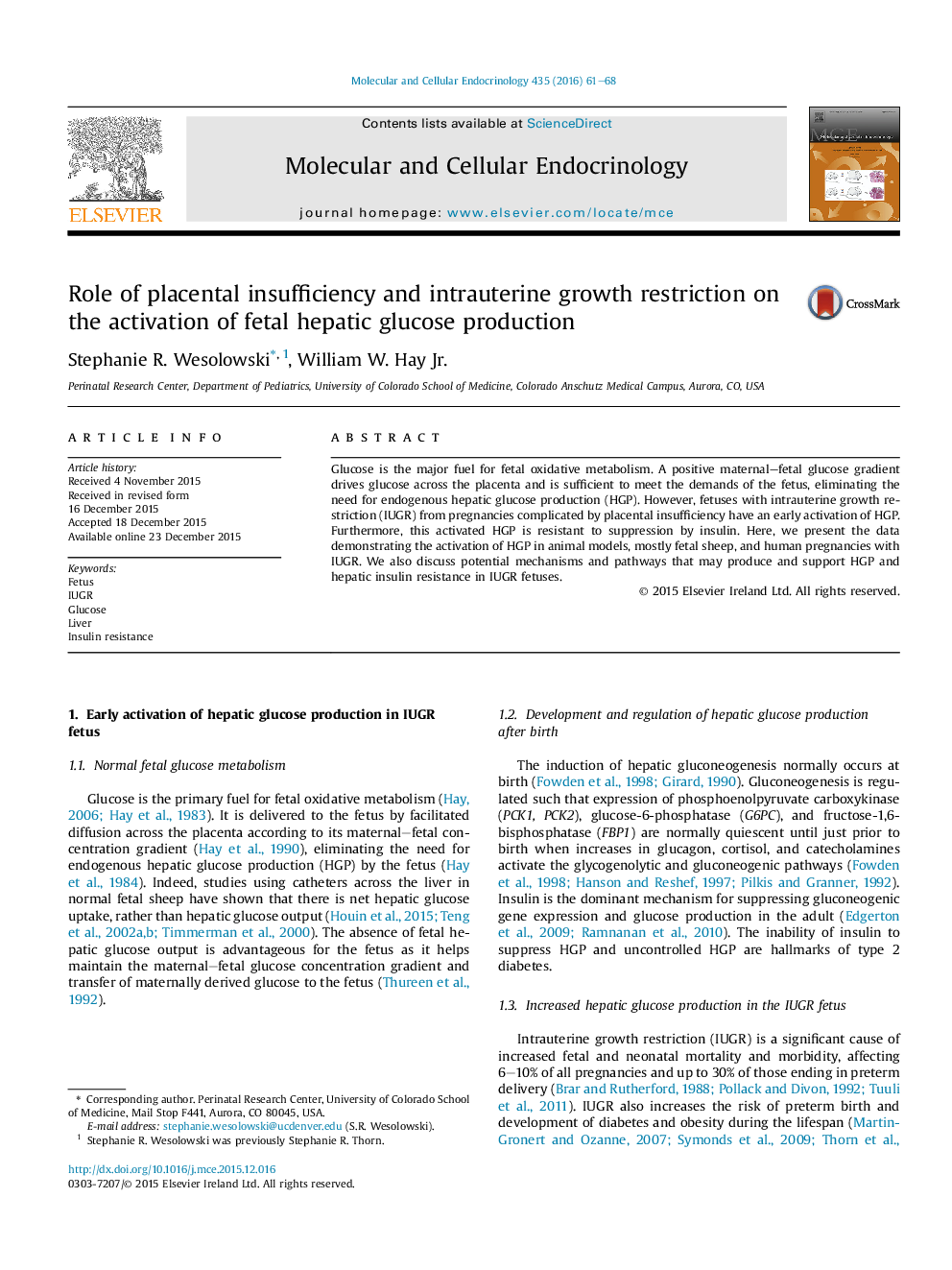| کد مقاله | کد نشریه | سال انتشار | مقاله انگلیسی | نسخه تمام متن |
|---|---|---|---|---|
| 2195484 | 1550844 | 2016 | 8 صفحه PDF | دانلود رایگان |
• Intrauterine growth restricted fetuses have increased hepatic glucose production.
• Mechanisms include changes in hormone signals, insulin action, and substrate supply.
• Increased hepatic glucose production is a complication in IUGR neonates.
• Persistence across the lifespan is a hallmark of type 2 diabetes.
Glucose is the major fuel for fetal oxidative metabolism. A positive maternal–fetal glucose gradient drives glucose across the placenta and is sufficient to meet the demands of the fetus, eliminating the need for endogenous hepatic glucose production (HGP). However, fetuses with intrauterine growth restriction (IUGR) from pregnancies complicated by placental insufficiency have an early activation of HGP. Furthermore, this activated HGP is resistant to suppression by insulin. Here, we present the data demonstrating the activation of HGP in animal models, mostly fetal sheep, and human pregnancies with IUGR. We also discuss potential mechanisms and pathways that may produce and support HGP and hepatic insulin resistance in IUGR fetuses.
Journal: Molecular and Cellular Endocrinology - Volume 435, 5 November 2016, Pages 61–68
